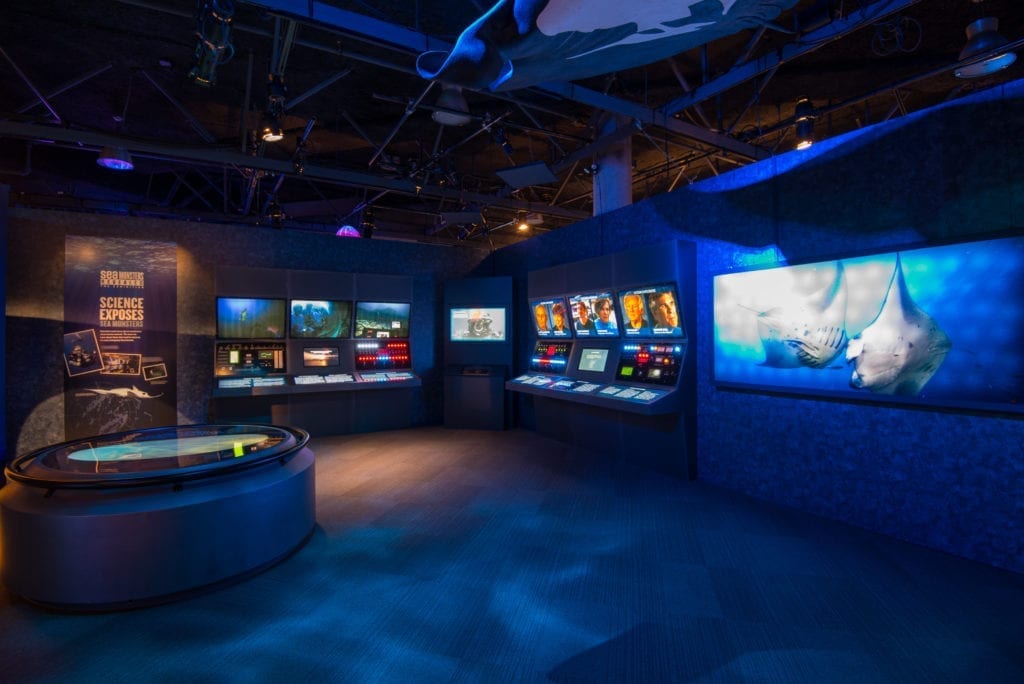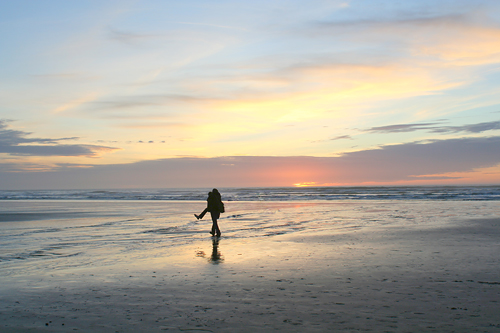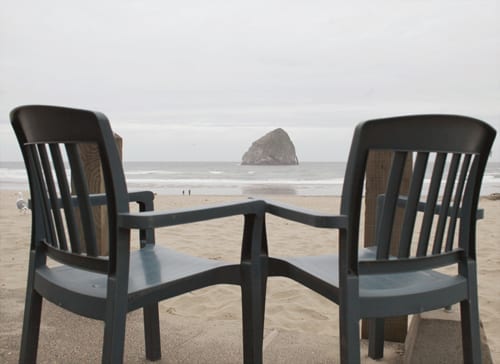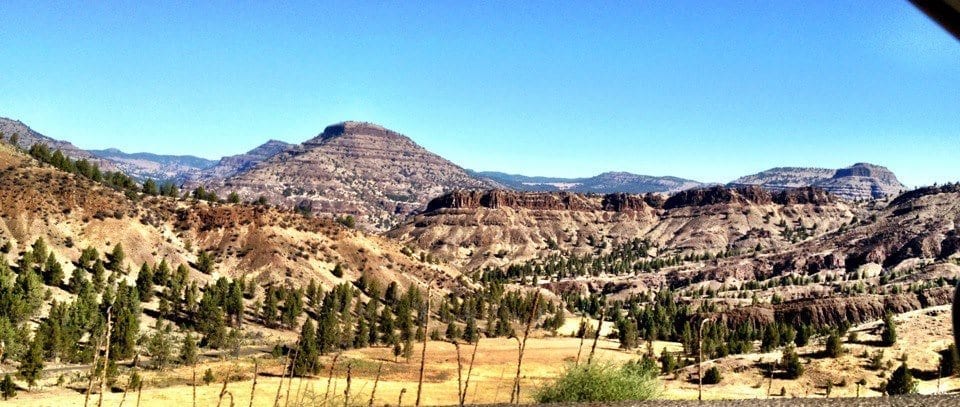
12 Strange Natural Wonders in the Pacific Northwest and BC
These odd Oregon, British Columbia and Washington State destinations can compete with even the best video game or smartphone and win. Don’t tell kids the science behind the weird natural wonder’s unusual nature — at least not right away — and see what interesting and creative explanations they might come up with, then explain the science.
1. Mima Mounds. The Mima Mounds seem like something out of a sci-fi movie — a meadow of grassy mounds in a repeated pattern, as if carved or created intentionally. In the past, locals thought perhaps “pocket gophers” created these little bumps. Turns out that the mounds are generated by plant growth — but aliens indeed would’ve been more fun.
2. Oregon Vortex. Dare your Wicked-loving daughter or son to belt out “Defying Gravity” here. Things seem to roll uphill at the Oregon Vortex, and nothing is quite as it seems. Turns out the vortex is part of a “gravity hill optical illusion.” There are many in the U.S., but this is the Northwest’s own.
3. John Day Fossil Beds. Spread out geographically over three “units,” spectacular reds, yellows and greens seem etched into The Painted Hills Unit, and the Clarno Unit looks like a cathedral for space-men (but is only viewable from below, along the highway). I recommend the Painted Hills over all others, thanks to easy-going paths that wind through super-vivid hills. But watch out for snakes!
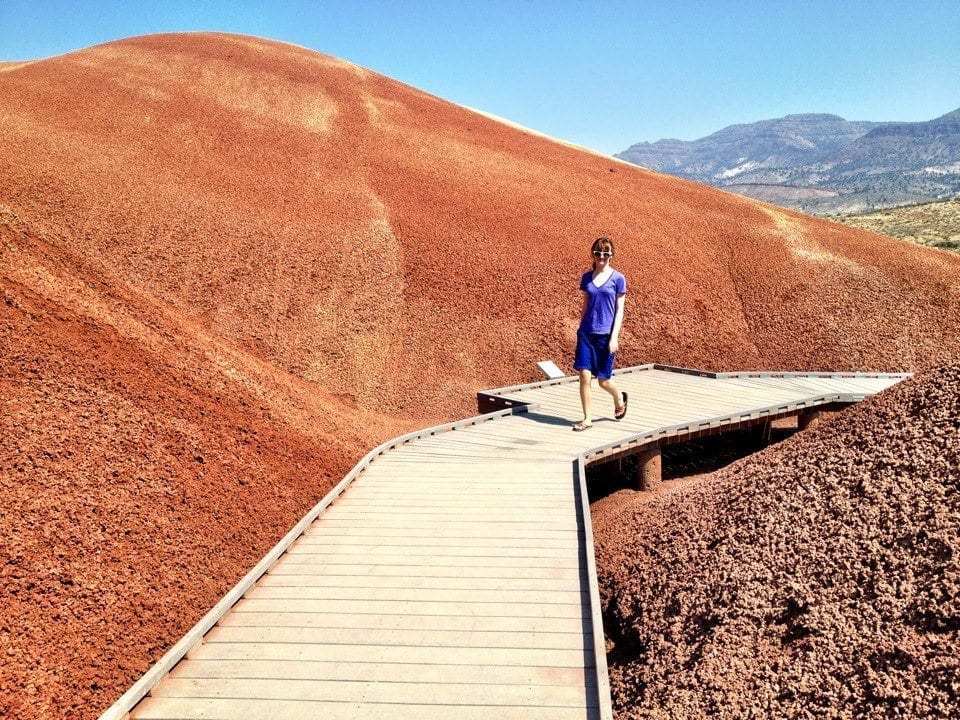
4. Gingko Petrified Forest. I know you’re imagining a standing forest made of stone, but the Gingko Petrified Forest is not that cool. This is a dry, mountainous area with more than 50 fossilized tree species, along with a park museum center that shows off fossils in funky shapes. Read more about the Gingko Petrified Forest.Â
5. Lost Lake. When is a lake not a lake? When it’s a Lost Lake. Every winter, the lake basin fills up, and every spring, it leaks down a giant hole that’s actually a dried-up lava tube! — sort of like your tub’s drain. Also, families can camp here at Lost Lake, in Oregon.
6. Beacon Rock. The Northern Hemisphere’s second largest free-standing monolith! A hiking trail winds around Beacon Rock to the top; keep an eye on impulsive children next to the barely-guardrails on this 722-foot monster of Southwest Washington. Other unusual rocks include Hat Rock in Eastern Oregon and Haystack Rock on the Oregon Coast.
7. Soap Lake. It’s like a giant bubble bath…kinda. Washington’s Soap Lake contains more than 20 minerals that give the lake a sloppy, soapy texture (complete with a brownish froth), and make the water buoyant. Oily ichthyols also float in the lake; Europeans believe these help heal skin issues. Fun gross-out kid fact: these ichthyols come from decomposing shrimp. Ew!
8. The Octopus Tree. A 250-year old Sitka spruce with branches that grow out and up, in a many-legged octopus pattern. Located at the Cape Meares Lighthouse along the Oregon Coast.
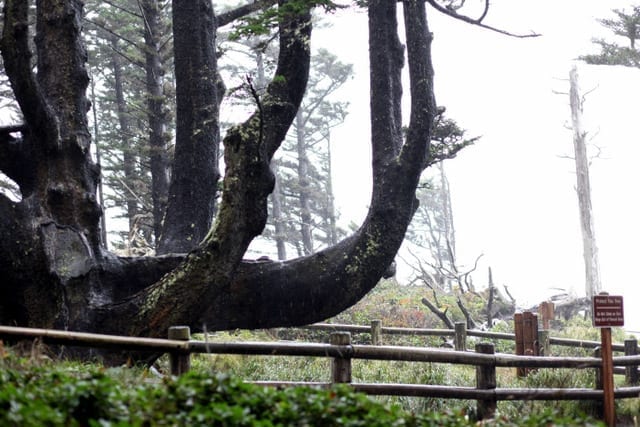
9. Spotted Lake. In Eastern British Columbia, Spotted Lake (Kliluk Lake) is covered in blue and yellow circles of varying sizes, thanks to colorful mineral deposits and summer’s evaporation. Located just west of the Washington-BC border town of Osoyoos.
10. Sea Lion Caves. Billed as the “America’s Largest Sea Cave,” this Oregon attraction is full of sea lions and pretty rank sea lion breath. But it is actually probably the largest sea lion cave in America. Take that for what you will, and the attraction will take $14 (adults) and $8 (ages 5-12).
11. Oregon Caves. These dark batcaves are the”marble halls of Oregon.” Â They bear 15,000 feet winding of marble, formed by underground cave women. No — just lava made it long ago. The Oregon Caves National Monument and Preserve’s excellent tour is recommended for big kids only: at least 42 inches tall (107 centimeters) and able to climb steep stairs without help. You can’t carry little ones. And yes, there are bats,but don’t worry they don’t bite. Another tunnel: Horne Lake Caves.
12. Oregon Dunes. The Oregon Dunes National Recreation Area offers 40 miles of Tattooine-like mountains of sand that can reach up to 500 feet tall, and rapidly overtaking local businesses. Wear serious hiking boots or comfortable shoes, bring a sled or snowboard for slipping down hills of sand. Sunglasses help prevent sand in your eyes.
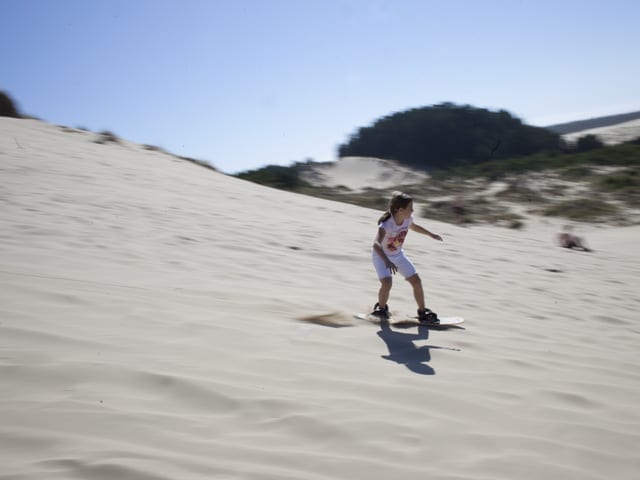
I think we can agree that Oregon is definitely one of the odder regions of our area, due to the diversity of natural oddities left behind by Earth’s evolution. I left volcanoes off this list, although they’re also extremely terrifying and fun.
